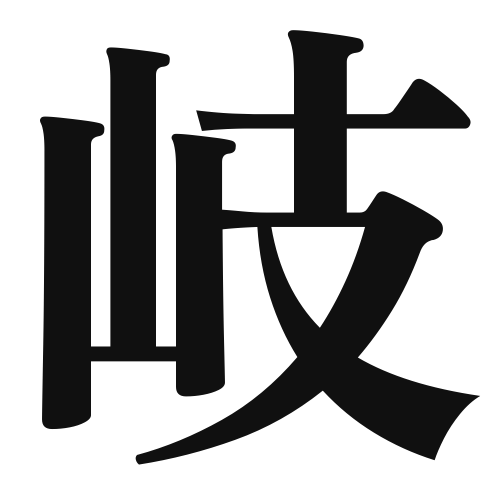1. Overview of Meaning
The kanji “岐” (ki) generally means “branch” or “fork,” often referring to a point where a path or road diverges into two or more directions. It symbolizes choices or different paths in life.
2. Formation and Radical
Formation of the Kanji: The kanji “岐” is a phonetic-ideographic character (形声文字) that combines the meaning of a mountain (山) with a phonetic component. It visually represents a mountain with a forked path.
Radical: The radical for “岐” is “山” (mountain), which is often associated with geographical features and elevation.
3. Examples of Usage
Common Words and Phrases:
- 岐路 (きろ, kiro) – crossroads
- 岐阜 (ぎふ, Gifu) – a place name in Japan
Example Sentence in Daily Conversation:
「人生には多くの岐路がある。」 (There are many forks in life.)
4. Synonyms and Antonyms
Similar Kanji:
- 分岐 (ぶんき, bunki) – branching, which emphasizes the act of dividing into parts.
- 選択 (せんたく, sentaku) – choice, which focuses on the decision-making aspect.
Antonyms:
- 統一 (とういつ, touitsu) – unity, which means to bring together rather than divide.
- 一つ (ひとつ, hitotsu) – one, indicating singularity as opposed to branching.
5. Cultural and Historical Background
Relation to Japanese Culture: The concept of “岐” is significant in Japanese culture, often symbolizing the choices one must make in life, reflecting the importance of decision-making.
Proverbs and Idioms:
「岐路に立つ」 (きろにたつ, kiro ni tatsu) – to stand at a crossroads, meaning to be at a critical decision point in life.
